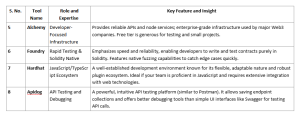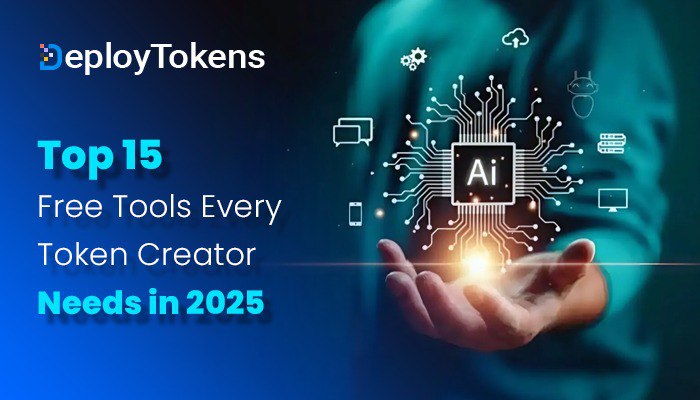We have already seen what happens when a token is built without a proper system. The crash of Luna and TerraUSD in 2022 proved this. It showed everyone that a token project can only survive if it has strong incentives, clear rules, and a solid tokenomics model. In 2026, token creation is changing. It’s no longer about hype or speculation. Now, the focus is on safety, stability, and good governance.
Today, whether you are creating a utility token, a governance token, or even a complex NFT collection, you need the right tools. And the good news is this: many high-quality tools are completely free. These tools help you test your smart contracts, improve your security, and follow best practices. They make token creation easier and safer for everyone even for beginners.
So in this guide, you’ll find the essential free toolkit every token creator should use in 2026, organized step-by-step based on the development process.
I. No-Code Solutions & Smart Contract Security
These platforms accelerate development and ensure your fundamental token contracts are secure and standard-compliant.
Did You Know?
- OpenZeppelin Contracts are industry-standard, securing a colossal volume of onchain activity: the total value transferred via them is over $25.16 trillion.
- For the non-technical beginner, Thirdweb offers an “Excellent” rating for Ease of Use, far exceeding tools that require coding like Remix.

Speaking to the necessity of secure foundational tools, Daniel Von Fange, Former Security Lead at Origin, affirmed that OpenZeppelin’s libraries are crucial:
“OpenZeppelin’s contract library continues to be one of the best things to have happened for security in this space.”
II. Infrastructure, Development, and Testing
Reliability and testing are paramount before launching a token. These tools support the technical deployment process.

Why Development Speed Matters
For projects requiring intensive, high-volume stress testing such as validating complex token distribution algorithms or governance rules; the speed difference between major testing frameworks can be dramatic.
In one measured comparison running 1,000 on-chain queries and transactions:
- Testing took 15 minutes with Hardhat.
- Testing took 1 minute with Foundry.
If your token launch relies on verifying edge cases, the native fuzzing functionality provided by Foundry allows for running 10,000 tests in seconds, making it incredibly rewarding for intensive development.
III. NFT, Marketplace, and Creator Tools (Asset Tokenization)
If your token model involves non-fungible assets (ERC-721 or ERC-1155) or community-driven collectibles, these specialized tools are essential.

IV. Essential Utility, Data, and Analytics
A launched token requires constant monitoring, data integration, and community analysis.
The Blockchain Explorer
A blockchain explorer is akin to a web browser or a file explorer. Just as a browser allows you to navigate the web, a blockchain explorer allows you to navigate the distributed ledger.

Practical Steps: Integrating Free Data (Tool #15)
To build a token dashboard or an analytics tool, integrating external market data is key. A service like the Free Crypto Price API (e.g., freecryptoapi.com) provides endpoints like /getCryptoList and /getData.
Practical Step 1: Authentication You must obtain and use an API Key for every request for security and rate-limiting purposes.
Practical Step 2: Testing the Endpoint (Using Apidog) While Swagger UI offers visual previews, a stable testing tool like Apidog is better for complex header and parameter management. To retrieve detailed price data for a specific symbol (e.g., ETH):
- Enter the URL: https://api.freecryptoapi.com/v1/getData. For Example!
- Add the Authorization Header: Authorization: Bearer YOUR_API_KEY.
- Add the Parameter: Name: symbol, Value: ETH.
- Hit SEND to receive price and market data.
The Token Economy Design Checklist
A successful token requires more than just code; it needs a comprehensive strategy covering three core domains: Incentives, Governance, and Tokenomics.
I. Incentives

II. Governance

III. Tokenomics

Conclusion
Creating a cryptocurrency token today involves rigorous design, moving beyond mere coding to incorporate economic incentives and robust governance. By utilizing the powerful array of free tools available, creators can successfully navigate the initial hurdles of development, rigorous testing, and secure deployment.
The importance of this preparation cannot be overstated. When faced with the complexities of long-term ecosystem health, relying on industry-standard security tools like OpenZeppelin and robust, fast testing environments like Foundry acts as essential insurance against the fate of poorly designed systems. Create your own token in just 1 minute with deploytokens and let the hurdles stay away from you for forever.
The Token Creator’s Journey
Designing a token economy is like launching a complex satellite: you need the core hardware (secure OpenZeppelin contracts), the blueprints (the Incentives/Governance/Tokenomics framework), a testing facility to simulate launch conditions (Foundry/Hardhat), launch infrastructure (Alchemy), and finally, ground control monitoring systems (Etherscan and Free Crypto Price API). Neglecting any one of these free, foundational components invites catastrophic failure in the live environment. Choose your toolkit wisely, and build securely.
